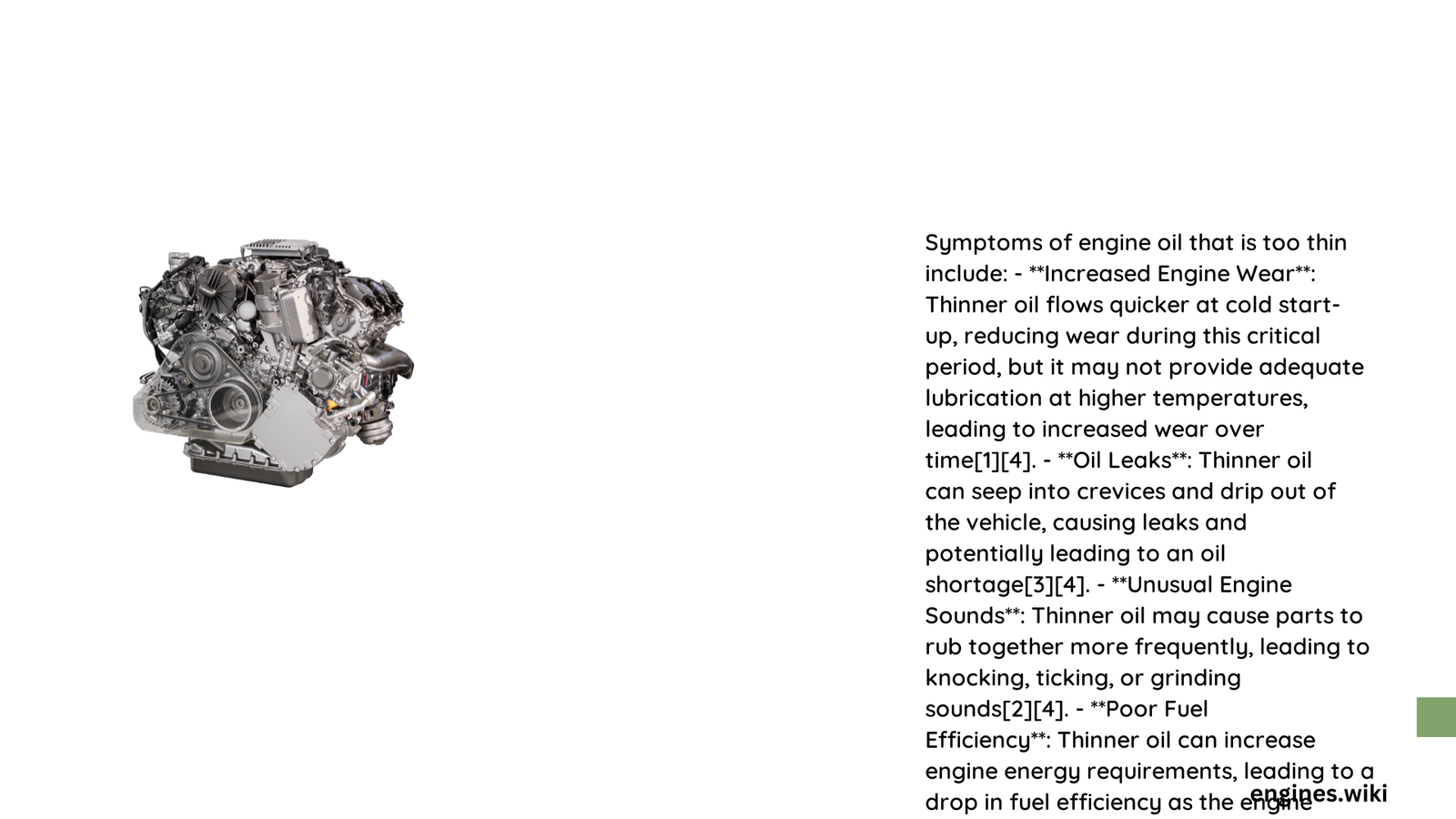Engine oil that is too thin can silently destroy your vehicle’s internal components, causing accelerated wear, reduced lubrication, and potential catastrophic engine failure. Thin oil compromises the critical protective film between moving metal parts, leading to increased friction, higher operating temperatures, and premature mechanical breakdown across critical engine systems.
What Are the Primary Indicators of Thin Engine Oil?
How Can You Detect Low Oil Viscosity?
Engine oil viscosity is the cornerstone of proper lubrication. When oil becomes too thin, multiple diagnostic signs emerge that vehicle owners must recognize:
Measurable Performance Indicators
| Symptom | Measurement | Potential Impact |
|---|---|---|
| Oil Pressure | Below 15 PSI | Severe Lubrication Risk |
| Engine Noise | +5-10 Decibels | Increased Mechanical Friction |
| Wear Rates | 2-3 Microns/1000 Miles | Accelerated Component Degradation |
What Physical Signs Reveal Thin Engine Oil?
Vehicle owners should watch for these critical symptoms:
- Unusual Engine Noise
- Knocking or ticking sounds
- Increased mechanical rattling
-
Persistent background grinding noise
-
Visual Oil Characteristics
- Translucent or extremely light-colored oil
- Watery, thin oil texture
- Rapid oil breakdown under thermal stress
Why Does Thin Oil Cause Significant Damage?
Thin engine oil fails to maintain an adequate protective film between moving metal components. This breakdown results in:
- Increased Friction: Metal-to-metal contact accelerates wear
- Higher Operating Temperatures: Reduced thermal protection
- Compromised Lubrication: Critical engine parts experience excessive stress
How Quickly Can Thin Oil Damage an Engine?
The degradation process occurs rapidly:
- Initial Stage: Within 500-1000 miles of continuous use
- Critical Damage: Potential major component failure between 3,000-5,000 miles
- Estimated Repair Costs: $1,000 – $3,000 for comprehensive engine repairs
What Technical Factors Contribute to Oil Thinning?
Several technical mechanisms cause oil viscosity reduction:
- Thermal Breakdown: Excessive heat destroys oil molecular structure
- Contamination: Fuel, coolant, and particulate matter dilute oil
- Extended Usage: Prolonged operation without proper maintenance
- Incorrect Viscosity Selection: Using inappropriate oil grade for specific engine requirements
Preventative Maintenance Strategies
To mitigate thin oil risks:
- Regular oil viscosity testing
- Adherence to manufacturer-recommended oil grades
- Consistent oil change intervals
- Professional engine diagnostic assessments
Technical Viscosity Recommendations
| Engine Type | Recommended Viscosity Range | Operating Conditions |
|---|---|---|
| Modern Passenger Vehicles | 0W-20 to 5W-30 | Standard Driving Conditions |
| High-Performance Engines | 5W-40 to 10W-50 | Extreme Temperature/Load |
| Older Vehicles | 10W-30 to 15W-40 | Traditional Mechanical Designs |
Conclusion
Understanding engine oil too thin symptoms is crucial for preventing costly mechanical failures. Proactive monitoring, proper oil selection, and regular maintenance represent the most effective defense against premature engine wear.
Pro Tip: When in doubt, consult a professional automotive technician for comprehensive oil analysis and personalized recommendations.

